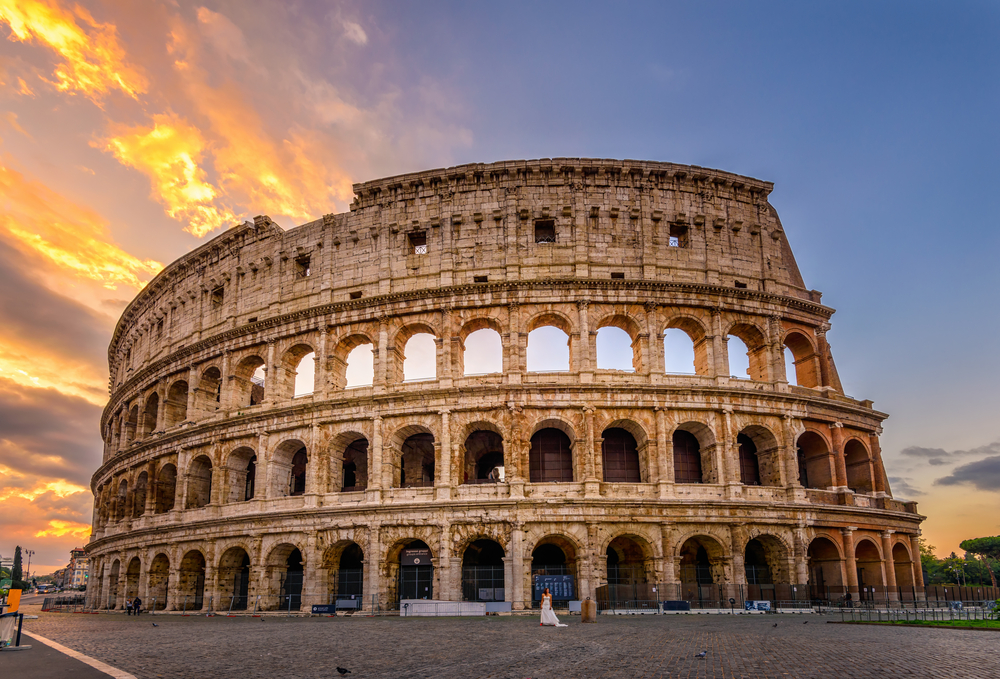The bygone era of Ancient Rome, often referred to as the Eternal City, stands as a shining example of the architectural prowess that remains unparalleled in the annals of history. Its grand structures, ranging from awe-inspiring temples to colossal amphitheaters, still hold the power to enchant and stir the imagination of those who visit. Join us as we set out to trace the remnants of Rome’s glorious past and delve into the architectural heritage that continues to impress millenniums later.

The Colosseum:
The Colosseum stands as an eternal symbol of the astonishing architectural feats achieved by ancient Romans. Conceived in the 1st century AD, it boasted enough space to seat 50,000 spectators, who were thrilled by the gladiatorial duels, exotic animal bouts, and other public spectacles. The Colosseum is a marvel not only for its imposing size but for its architectural sophistication, featuring a network of supporting arches and an intricate labyrinth of passages that attest to the Romans’ skills in engineering.
The Pantheon:
Another masterpiece, the Pantheon, represents a sacred space dedicated to the pantheon of deities and is renowned for its architectural brilliance. Constructed in the 2nd century AD, the magnificent dome of the Pantheon stands to this day as the world’s largest dome made of unreinforced concrete. The Pantheon’s graceful rotunda and its light-admitting oculus at the zenith demonstrate the ancient Romans’ expertise in designing structures of great beauty and harmony.
The Roman Forum:
At the heart of ancient Rome lay the Roman Forum, a nexus of civic, economic, and social endeavors. The area, now a sprawling field of ruins, once glittered with an array of temples, basilicas, and stately edifices. Strolling through the Forum, modern visitors can immerse themselves in the ancient city’s atmosphere, where relics like the Senate House, the Temple of Saturn, and the Arch of Titus offer silent narratives of the Roman Empire’s erstwhile majesty.
The Baths of Caracalla:
The opulent Baths of Caracalla exemplify the grandeur and elegance that characterized the lifestyle of ancient Romans. Constructed in the 3rd century AD, this immense bath complex stretched across 28 acres and served up to 1,600 patrons simultaneously. The place boasted advanced heating technologies, stunning mosaics, and ornate halls, providing a window into the indulgence and sophistication of ancient Roman recreational pursuits.
The Roman Aqueducts:
The Roman aqueducts, a network of structural marvels, epitomize the ingenuity of Roman engineering. Employing arches and precision-cut stone, they traversed expansive terrains, conquering the obstacles of nature to deliver pure water to Rome. The aqueducts’ design highlights the Romans’ grasp of gravitational forces and hydraulics and their ability to forge elaborate distribution channels to sustain the city’s water supplies.
The Circus Maximus:
The gargantuan Circus Maximus, once Rome’s premier venue for chariot races, could seat a staggering 250,000 spectators. While today’s site offers but a hint of its former glory, it still captures the essence of the pomp and fervor that characterized Roman public events. Even as only fragments remain, the Circus Maximus stands as a silent witness to the grand entertainments that were integral to Roman culture.
The Arch of Constantine:
Erected in the 4th century AD, the Arch of Constantine commemorates the triumphs of Emperor Constantine I. This arch is adorned with exquisite bas-reliefs and sculptures, some repurposed from previous structures, reflecting the Romans’ reverence for their architectural accomplishments and history. The Arch of Constantine serves as an enduring monument to the cultural continuity and rich architectural lineage of Rome.
In conclusion, the splendor of ancient Roman architecture, with relics like the Colosseum, the Pantheon, the Roman Forum, the Baths of Caracalla, the aqueducts, the Circus Maximus, and the Arch of Constantine, continues to awe and inspire awe in modern-day observers. These enduring edifices not only bear witness to the magnificence of Rome’s historical landscape but also deepen our respect for the creative genius of the ancient Romans, whose influence remains embedded in the foundations of contemporary architecture and engineering. The Eternal City beckons history enthusiasts to walk through the annals of time and marvel at the enduring splendors of a bygone civilization that still resonates with us today.







